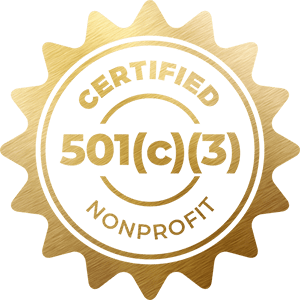Top Nonprofit Agency: Helping Charities and Organizations Achieve Their Objectives
Top Nonprofit Agency: Helping Charities and Organizations Achieve Their Objectives
Blog Article
Checking Out the Diverse Features and Duties of a Nonprofit Agency in Dealing With Social Issues and Promoting Modification
Not-for-profit companies act as critical representatives of change within culture, tackling a myriad of social concerns via multifaceted approaches. Their obligations prolong beyond mere solution arrangement; they take part in campaigning for, resource mobilization, and community outreach, commonly working as a bridge in between essential solutions and marginalized populaces. By promoting cooperations and utilizing culturally pertinent techniques, these companies resolve the origin causes of social obstacles. Yet, the intricacies of their duties elevate crucial questions concerning effectiveness and sustainability. What are the effects of these varied features on lasting community impact?
Recognizing Nonprofit Company Functions
The efficiency of nonprofit companies hinges on a clear understanding of their diverse functions within culture. Not-for-profit firms typically work as solution suppliers, supplying essential programs and resources to underserved populaces.
Additionally, nonprofits play an essential role in advocacy, raising recognition and affecting plan choices that affect their communities. By taking part in research study and public education and learning, these organizations assist shape public discussion and advertise notified decision-making - nonprofit agency. They likewise function as platforms for volunteerism, activating neighborhood members to add their time and skills toward cumulative objectives
Furthermore, not-for-profit firms often work as conveners, bringing together varied stakeholders to foster partnership and cumulative influence. This collaborative method enhances their capability to address complex social problems properly. Understanding these diverse duties is vital for making the most of the capacity of nonprofit companies in producing sustainable social change and boosting total neighborhood health.
Area Interaction and Outreach
Efficient neighborhood involvement and outreach are basic parts of nonprofit companies' approaches to construct and foster links count on within the neighborhoods they serve. These efforts concentrate on understanding community demands, promoting recognition of available sources, and encouraging participation in programs made to attend to social issues. Nonprofit companies utilize a variety of approaches to engage with neighborhood members, such as workshops, informative sessions, and collective events.
Outreach efforts offer to reinforce partnerships with varied populaces, specifically marginalized teams who may face obstacles to accessibility. By making use of culturally appropriate interaction approaches and leveraging neighborhood collaborations, nonprofits can boost their visibility and demonstrate their dedication to community empowerment. This technique not only cultivates a sense of belonging yet likewise increases the probability of sustained interaction.
In addition, effective neighborhood involvement exceeds mere participation; it involves proactively listening to community members' feedback and including their insights into program growth. This joint procedure makes sure that the services provided are receptive, pertinent, and customized to the distinct obstacles dealt with by the area. Ultimately, promoting strong links through interaction and outreach can result in more impactful interventions and a higher collective initiative towards promoting positive social adjustment.
Advocacy and Plan Impact
Advocacy works as an essential system for nonprofit agencies to influence public policy and drive systemic modification. By leveraging their proficiency and community insights, these companies can effectively stand for marginalized populations and address pushing social issues. Nonprofits participate in advocacy with different strategies, consisting of public understanding projects, grassroots mobilization, union structure, and straight lobbying of policymakers.
Through these efforts, not-for-profit firms aim to form legislation and policy structures that straighten with their objective and the requirements of the areas they offer. They perform study, collect data, and share compelling stories to highlight the seriousness of certain problems, making sure that decision-makers are informed and inspired to act. This process not only enhances the voices of those impacted by social oppressions but likewise cultivates a much more comprehensive and fair policymaking environment.
Additionally, campaigning for initiatives frequently seek to produce long-term structural modifications, resolving origin instead than just relieving signs and symptoms. By focusing on policy influence, nonprofit companies add to a more comprehensive understanding of social difficulties and promote solutions that can result in lasting improvements in social wellness. Eventually, advocacy is fundamental to the transformative role nonprofits play in developing a simply and fair culture.
Fundraising and Resource Management
Nonprofit firms depend on robust fundraising and resource management techniques to sustain their advocacy initiatives and maintain their objectives. By using a multi-faceted approach, nonprofits can reduce the risks connected with reliance on a solitary funding source.
Source administration is equally crucial, as it entails the strategic appropriation of both economic and human resources to maximize influence. Nonprofits must develop budgets that align with their objectives while making sure openness and liability to learn this here now stakeholders. This includes routine monitoring of expenditures and changing techniques as needed to optimize resource use.

Cooperation and Partnerships
While many organizations pursue their objectives individually, cooperation and collaborations can significantly improve the effectiveness of nonprofit firms. By interacting with various other nonprofits, federal government entities, and economic sector organizations, you could try these out nonprofits can merge sources, share knowledge, and magnify their influence on social issues. Collective initiatives often lead to ingenious remedies that may not be achievable independently, leveraging the strengths of each partner to attend to complicated difficulties.

Inevitably, effective partnership calls for clear communication, shared objectives, and common regard among partners. By embracing a participating method, not-for-profit firms can create sustainable networks that not just address immediate social concerns but additionally add to long-term systemic change, promoting an extra fair society. Through collaboration, nonprofits can grow and maximize their possibility for significant effect.
Final Thought
Not-for-profit view it firms work as vital entities in addressing social issues and promoting adjustment within areas. Via varied functions such as neighborhood involvement, advocacy, and source administration, these companies properly mobilize sources and assistance for underserved populations. Their collective initiatives with various stakeholders improve the capacity to affect public law and advertise structural modifications. Eventually, the diverse roles of nonprofit firms significantly add to the quest of social justice and the enhancement of community wellness.
Understanding these diverse duties is critical for maximizing the possibility of nonprofit companies in creating sustainable social adjustment and improving overall community wellness.
Efficient area interaction and outreach are basic components of nonprofit firms' strategies to cultivate connections and develop depend on within the areas they offer. By working together with other nonprofits, government entities, and exclusive industry organizations, nonprofits can pool sources, share expertise, and enhance their impact on social problems.Not-for-profit firms serve as essential entities in dealing with social problems and cultivating modification within neighborhoods - nonprofit agency. Ultimately, the diverse functions of nonprofit companies significantly add to the quest of social justice and the enhancement of area health
Report this page